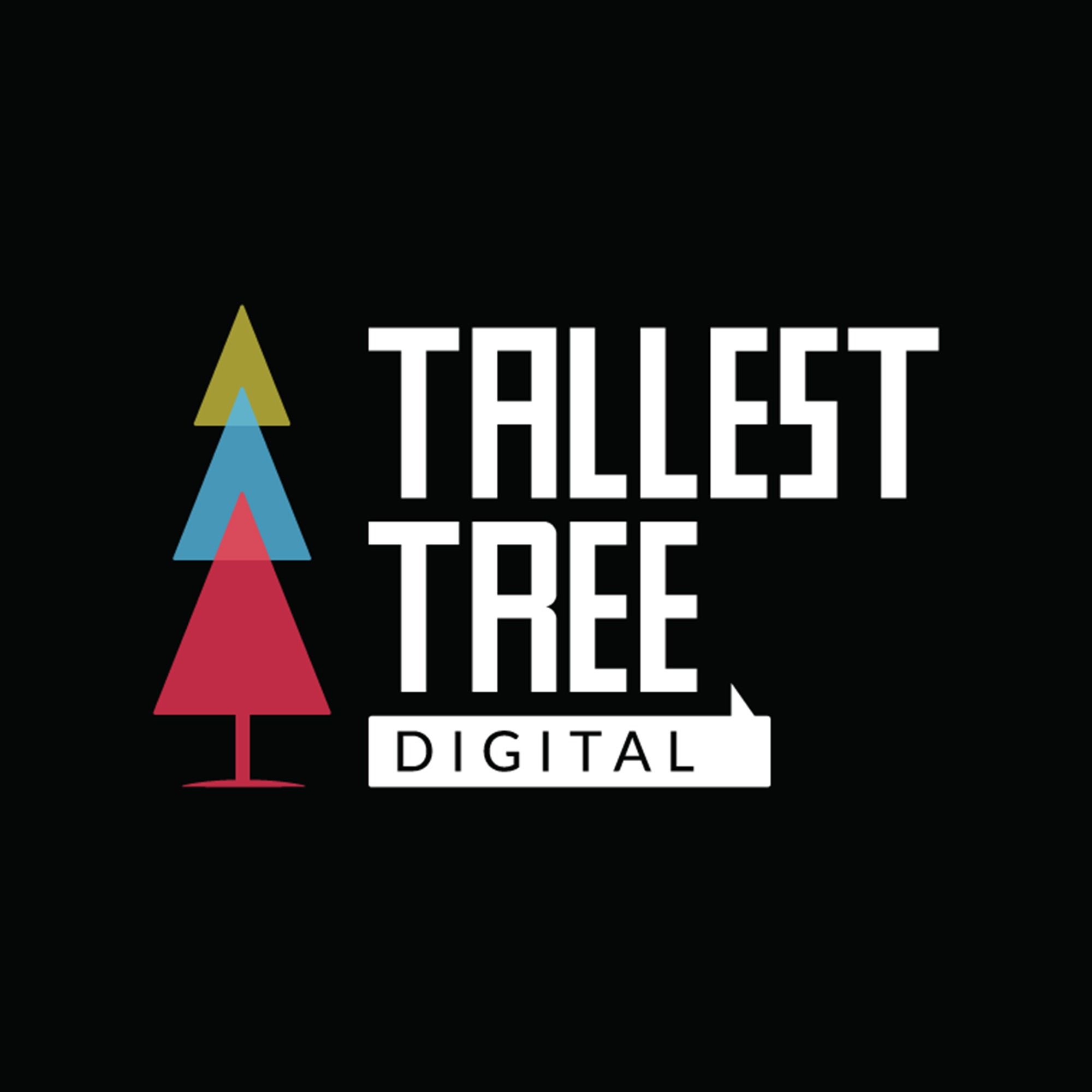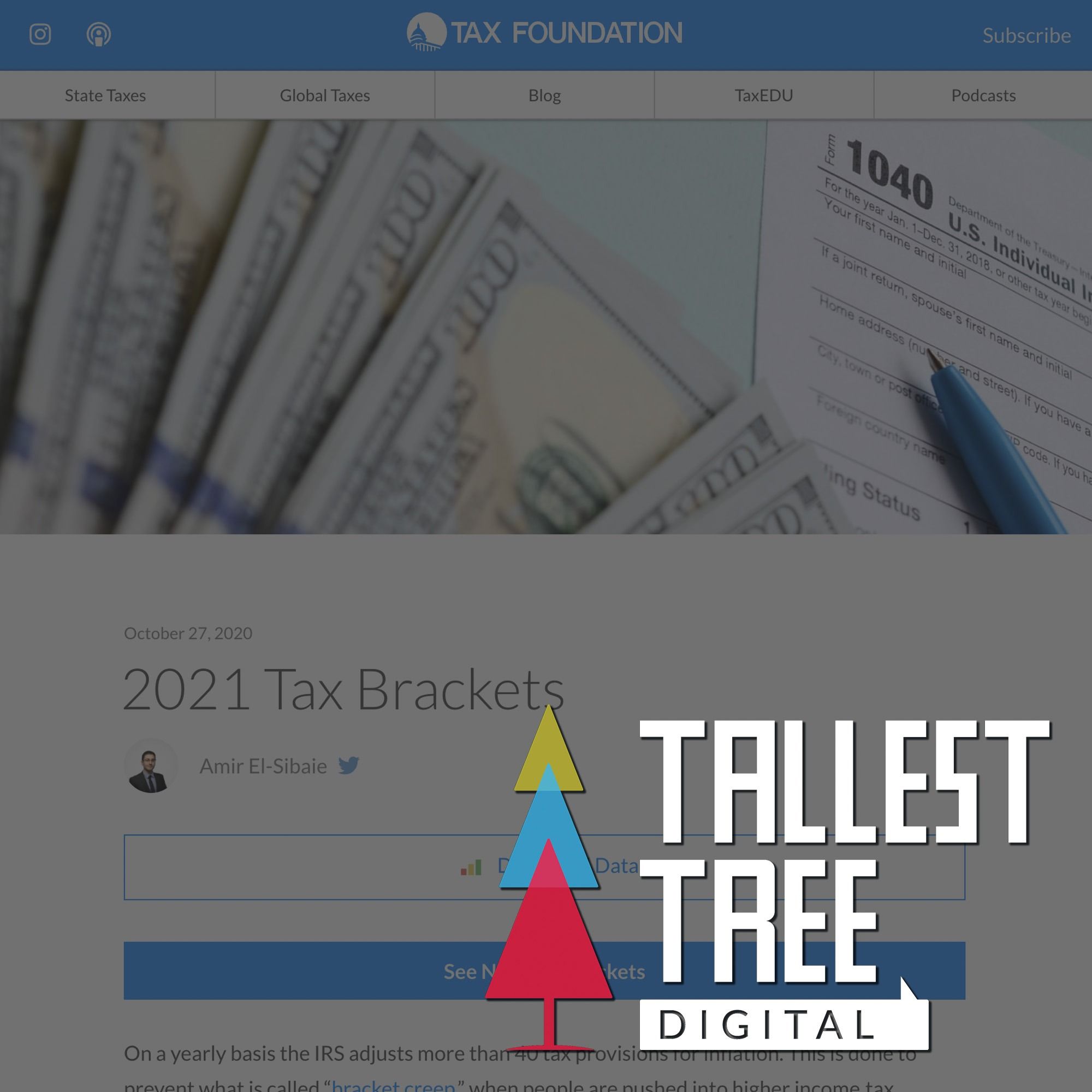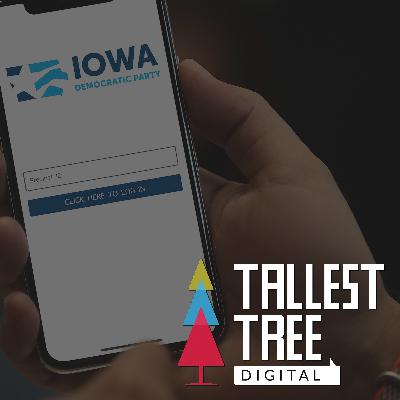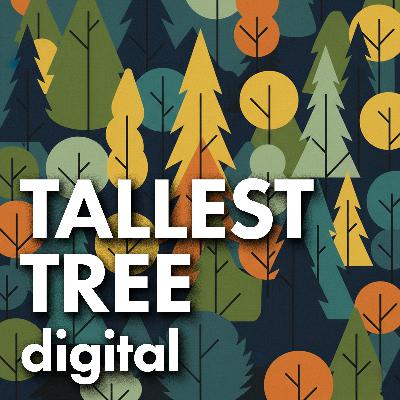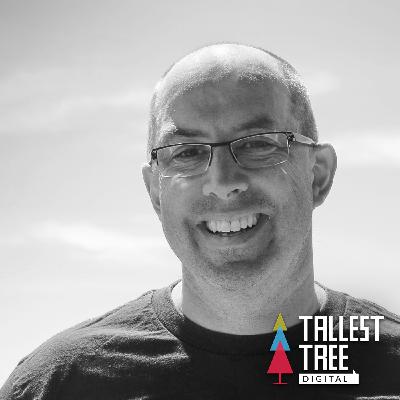Discover Tallest Tree SEO Podcast
Tallest Tree SEO Podcast

Tallest Tree SEO Podcast
Author: Tallest Tree Digital LLC
Subscribed: 1Played: 27Subscribe
Share
© Tallest Tree Digital LLC
Description
Each week Cord Blomquist and Einar Jóhannsson discuss search news and discuss their experience working in search engine optimization (SEO) for think tanks and publishers.
20 Episodes
Reverse
Sources Cited:Google Search gets Status Dashboard to provide updates during outagesGoogle December 2022 Link Spam UpdateGoogle Launches Visual Guide To Search ElementsLily ray on google updatesA guide to Google Search ranking systems
In a short episode, Cord and Einar preview the new and improved Tallest Tree Think Tank Ranking. The new rankings will be automated, updated monthly, and incorporate more data than ever. This includes:Budget data from ProPublicaTraffic, traffic value, domain rating, and backlink data from AhrefsPages indexed from Serp APIWeb software from WappalyzerWe're now able to pull historical traffic data from Ahrefs, which will give us insights into the last 36 months of performance for each of the 300+ groups in our study. We thank Ahrefs, who reviewed and approved our use of this data, for their support of this project.We're also working with a new statistician, assistant professor of marketing at Clemson University, Lura Forcum. We're grateful for her insights on the data.A few trends popped up in data review:About 12% of groups are still dealing with www vs non-www canonical issuesMany sites have pop-ups that likely violate Google's Page Experience guidelinesWe found "spikey" traffic patterns for many groups, especially state-based think tanks, which may be explained by the location from which the traffic data was collectedWe saw a few sites that relaunched w/o redirects in place, which resulted in their referring domains crashing and large losses in trafficMany groups were affected by recent Google updatesMany groups saw growth in referring domains w/o growth in traffic
Cord & Einar discuss all things linking. Can JavaScript links pass PageRank? How to HTTP to HTTPS redirects work? Are old links irrelevant? Will links always be a ranking factor? What's a link graph?Sources Cited:Search Engine Roundtable: Google Updates Help Documentation To Say Using JavaScript For Links Can Be FineGoogle Search Central: Make your links crawlableSearch Engine Roundtable: Google Can Pass PageRank From HTTP To HTTPS URLs With RedirectsSearch Engine Roundtable: Google: Some Old Links May Be Irrelevant (AKA Link Rot)Search Engine Roundtable: Google: Links Will Be Less Important As A Ranking Factor In The FutureKevin Indig: https://twitter.com/kevin_indig/status/1590115045236965376SEMRush: Get a Bird’s Eye View of Any Website’s Link NetworkSearch Engine Roundtable: Google Search Console API Delay To Be Fixed In DaysSearch Engine Journal: Is Bounce Rate A Google Ranking Factor?
In this episode Cord & Einar discuss the ever-evolving Tallest Tree approach to SEO audits.Here's the outline Cord & Einar used on the show:ToolsSitebulb: run both an HTML-only and JavaScript crawlAhrefs CrawlerAhrefs Site ExplorerAhrefs Chrome extensionGoogle Search ConsoleChrome Inspector w/LighthouseGoogle’s Robots TesterInspect URL in GSCSchema ValidatorMerkle’s https://technicalseo.com/tools/The Wayback MachineFirst lookExplore the site by hand, view source on whatever the half dozen most-used templates seem to beTurn off JavaScript using Chrome extension and review the site againExplore the backend and get some counts on posts, categories, authors, etc.Look at plugins/modulesReview Sitebult/Ahrefs crawl resultsReview Google Search ConsoleThe goal of the first look is form a basic hypothesis about how technical SEO and site structure can be improved. Take screenshots and start making slides right away.ChecklistReview 192 items in 35 categoriesReportingHow a search engine worksCrawlingIndexingRankingE-A-TMeasurementRank TrackingGTM & GA4 for Traffic & ConversionsLink GrowthGoogle News
In this episode Cord & Einar discuss Google changing Data Studio to Google Looker Studio, SEO conferences, Kevin Indig's take on the latest Google updates, previously visited sitelink icons, and the trouble with timestamps.Sources Cited:Search Engine Roundtable: Google Data Studio Is Now Looker StudioSearch Engine Journal: The Best SEO Conferences In 2022-2023 (Virtual And In-Person)Kevin Indig: Google's latest updates leave no room for low-quality contentSearch Engine Roundtable: Google Tests Previously Visited Sitelinks IconsSearch Engine Roundtable: Google Still Working On Getting Timestamps Accurate In Search Results
In this episode Cord & Einar discuss the title tag length, "link juice," AMP is dead, measuring forms with GA4, how Googlebot handles iframes, and how to think about copies of original content on the web.Sources Cited:Search Engine Land: What should the title tag length be in 2023?SEO Roundtable: Google: Anything That Talks About Link Juice Should Be IgnoredLily Ray 😏 on Twitter: "The "nail in the coffin for AMP"Search Engine Land: GA4 now has an enhanced measurement option for Form interactionsSearch Engine Land: Technical SEO testing: How Googlebot handles iframesSEO Roundtable: Google Gives Advice On When Copy Sites Outrank Your Original Content
In this episode Cord & Einar discuss the changes to mobile search, iOS 14.5 makes the case for programmatic SEO, September core update winners/losers, changing URLs, website quality scores, and 4 ways to measure SEO effectiveness.Sources Cited:Search Engine Journal: Google Announces 5 Changes Coming To Mobile SearchVenture Beat: Decreasing ad revenue, iOS 14.5 make case for programmatic SEOAmsive Digital: Winners & Losers of the September 2022 Core Update & Product Reviews UpdateSearch Engine Journal: Website Quality Score: Is It A Google Ranking Factor?Search Engine Land: 4 smarter ways to measure SEO effectiveness
In this episode Cord & Einar discuss the Google September Core Update and how we can measure the effect it's had on website combined with the Helpful Content. We also talk about GSC reports and a fatal error caused by a Yoast plugin update.Sources Cited:Search Engine Journal: Yoast SEO 19.7 Causes Fatal Error & Crashes WebsitesSearch Engine Land: Google launches new HTTPS report in Google Search ConsoleSEO Roundtable: Is The Percentage Of Pages Not Indexed A Bad Google SEO Sign?Ahrefs: How to Fix "Discovered - currently not indexed"Kevin Indig: Case Study AI content punished by the HCU updateSearch Engine Journal: Google Says AI Generated Content Is Against GuidelinesSearch Engine Journal: Google Answers If Core Update Ranking Losses Are A Soft PenaltyBarry Adams: https://twitter.com/badams/status/1572136878740054019?s=12&t=SLaNlPLSq-JmdJdNOttFJASearch Engine Journal: Google: Timing Of September Core Update After HCU Not CoincidentalBarry Adams: https://twitter.com/badams/status/1572631653557895168?s=12&t=i5qR5S75L3-c2fC0DwMbcQ
Why is the "Helpful Content" not very helpful so far? We also discuss new reporting for Core Web Vitals, the worst SEO advice, open-sourcing Yoast schema, and Google's "Search Off The Record" podcast's recent statements on crawl budget.Sources cited:Search Engine Land: Google On Why Helpful Content Update Seems QuietSEO Roundtable: Google Core Web Vitals Report Adds URL Level Data For Examples URLsSearch Engine Land: The WORST SEO advice I heard this year (and what you should do instead)Yoast: Open-source software, open Schema protocol!Search Off the Record: Crawl Budget
Where has Google's data gone? How to "align with consensus" according to the QRG. What Google says you should do with old events (probably delete them), and our thoughts about robots.txt.Sources Cited:https://pca.st/episode/2cc8cdde-b00a-4da7-8c9f-c4b79845ede0https://searchengineland.com/google-consensus-qrg-seo-387142https://www.seroundtable.com/google-seo-old-event-pages-33847.htmlhttps://developers.google.com/search/docs/advanced/robots/robots_txt
Colby Pastre and Kevin Kaufman join me to talk about how the Tax Foundation uses simple content like an annual tax bracket page to generate over 23 million pageviews a year!We talk shop about internal linking, first-move advantage, crawling your own site, using search console, and keyword research tools to maintain your site's edge. We wrapped up our conversation with some practical advice on E-A-T, structured data, and overall site structure.Colby and Kevin are great practitioners of a solid SEO strategy. I hope to have them back as guests soon.
Five questions we ask each prospective client:Why now? What's motivating you to do this now and not six months from now?Why us? Why not someone cheaper?Why not use something off-the-shelf?Why not handle this in-house?Why even bother? Wouldn’t it be cheaper to do nothing?
What makes a good homepage design?We talk about the Nielsen/Norman Group's "4 Credibility Factors"https://www.nngroup.com/articles/trustworthy-design/How can you incorporate these factors into your homepage?Design qualityUpfront disclosureComprehensive, correct, and current contentConnection to the rest of the webHow should you guide users?Primary & secondary calls to actionProvide more ways to engage, like social followingUse current user data to promote your most popular content upfront
How does primary content gets broken down into micro content? That micro content essentially serves as ads on social media platforms that point back to your primary content. We talk about the role of tertiary content—the long-form posts we write that few people read—and why it shouldn't be viewed as primary. I go into an example of my in-laws' bookstore, which has taken this model and seen great success as a local business. Even though this is outside of our client base, it's a really easy example to grasp and it shows that you don't need much in the way of original content to draw people to your website and achieve your goals. Our "50 Pieces of Content a Week" goal is a little weak compared to Gary Vee's 64 piece a day prescription, but we think this is more manageable for small and mid-sized organizations.
Search Engine Journalhttps://www.searchenginejournal.com/technical-seo/website-navigation/#closeUsers come first: Your website navigation should satisfy users first. Then, optimize your navigation for SEO performance. Never compromise the user experience.Orbit Mediahttps://www.orbitmedia.com/blog/website-navigation/Be descriptive“What we do” doesn’t actually say what you do. Neither does “Products,” “Services” or “Solutions.” Descriptive navigation that uses keyphrases is better for two reasons. Here’s where SEO and conversions come in.Descriptive labels in your navigation are good for search engines and visitors Avoid format-based navigationNavigation labels such as “videos,” “photos” and “white papers” tell visitors the format of the content, but not the topic. People don’t go to websites looking for videos or whitepapers. They visit websites looking for answers and information.Nielsen Norman Group recommends against using format-based navigation.Avoid dropdown menusUsability studies show that dropdown menus are annoying. Here’s why: visitors move their eyes much faster than they move their mouse. When they move their mouse to a menu item, they’ve likely already decided to click… and then you gave them more options. It’s a hiccup in the mind of the visitor.Depending on how they’re programmed, they may lead to problems with search engines.But the research shows that one type of drop down menu performs well in usability studies: The “mega drop down.” These offer lots of options, making that moment of friction worth it.The order of your website navigation is importantPrimacy effect: Items at the beginning of a list are more easily remembered.Recency effect: Items at the end of a list (or things that just happened) are more easily remembered.How to optimize your website’s navigationHere are some examples of decisions you might make based on your analysis from these reports.Remove items that rarely get clicked, if they aren’t criticalRename or relabel that rarely get clicked, if they are importantMove items that often get clicked to the beginningWebsite navigation on mobile devicesAdding the word “menu” may help visitors find this type of “hidden” navigation. The Nielsen Norman Group warns that hidden navigation increases task completion time for visitors.Quantum Dynamixhttps://www.quantumdynamix.net/blog/improve-websites-navigation-9-best-practices/ALWAYS MAKE IT CLEAR WHERE THE USER IS LOCATED.There are bread crumbs at the top of the page’s content showing each of the following pages that led to this page. You can click on any of these breadcrumbs to go back to a previous page.Search Engine Journalhttps://www.searchenginejournal.com/technical-seo/website-navigation/#closeCross-linking between content silos: Content relevancy between pages is important for ranking, which comes naturally in a well-categorized, hierarchical site architecture. However, this can have limitations when it lacks cross-linking between content silos where some pages are just too deep or too far away from receiving a good amount of link juice from other...
Why did we choose roadmapping as a new approach?How are we addressing the problems of our former approach?How does roadmapping help clients?Get the diagnosis rightLess committmentStart projects with confidenceCreate a portable plan of actionCommon objections to roadmappingWhy pay when I can get an estimate for free?I know what I need, just built it.What am I really getting for this price?Who is the ideal client for roadmapping? And for Tallest Tree in specific?
This week Cord interviewed Brian Phillips, the Vice President for Communications at the Texas Public Policy Foundation. Cord & Brian discussed launching a policy tour of Texas, integrating polling into your organization, and how TPPF took on a recent property tax reform effort.
Policy Tour
Bringing political campaign experience to the policy world
How TPPF took its show on the road and toured Texas with policy experts.
Getting local or state press to cover events focused on policy
How TPPF chooses a venue, format, and subject for each of its policy tour stops
Inviting a state rep to these stops to increase audience engagement
Streaming events live
Limiting analysts to only three slides for their presentations
Critiquing presentations after the facts and continuously improving
How to plan a tour like this
Managing town-hall-style presentations
Money, manpower, and message
Offering an exclusive to local papers
Using polling to measure the effectiveness of the tour
Polling & Messaging
Writing poll questions that tell you something useful, rather than confirming your priors
Digging into polling cross tabs to find out where an issue is resonating or with what group of people
Integrating polling and messaging into your organization
Using Facebook for quick-and-dirty message testing
Selling policy experts on changing messaging by using data
Property Tax Reform Campaign
Policy issue campaigns are all about following the issue, reacting to news, and nuturing the messaging along the way
Phases: public education, creating activitists, mobilizing activitists
Polling helped to establish the "intensity" of this issue for voters
Polling also showed that any reform needed to result in lower taxes, not just slowed tax growth or a different arrangement
Creating a property tax calculator that would show voters their tax bill for the next 10 years
Crafting poll questions to get real data, not just virtue signaling
How releasing the results of a poll shifted the nature of the property tax reform plan
Getting started with polling by using it on an issue where you're simply stuck
Brian's book recommendation: Damage Control (Revised & Updated): The Essential Lessons of Crisis Management by Eric Dezenhall.
Brian shouts-out Illinois Policy Institutes's news-focused approach to policy and the Foundation for Government Accountability's communication's team as great examples of successes in marketing good public policy.
Brian also advocated trying new things, even if those things are only new to you. R&D can mean "rip-off and duplicate."
Parting wisdom: there's no such thing as "the general public." You must have an audience in mind with everything you write or create.
Please remember to rate and review this show on Apple Podcasts, follow Tallest Tree Digital on Twitter, like our page on Facebook, and share this show with other public policy marketing and communications professionals like you.
This week Cord interviewed Todd Myers, Director of the Center for the Environment at Washington Policy Center. He is one of the nation's leading experts on free-market environmental policy and the author of Eco-Fads: How the Rise of Trendy Environmentalism Is Harming the Environment.
Cord & Todd talked about:
How to establish trust when working on a fraught issue
Overcoming biases
Working in a policy area that’s not easily quantified
Using smartphones to solve coordinated action problems
Find the right venue or audience for the issue you’re addressing
Making a frenemy into an ambassador
Challenging claims about your motivations
When to use consultants
Finding success on Facebook
The importance of experimentation
Working with unlikely allies
Hosting a policy nature hike
Holding a debate instead of a one-side forum
Todd's book recommendation was Brian Caplan’s The Myth of the Rational Voter.
Please remember to rate and review this show on Apple Podcasts, follow Tallest Tree Digital on Twitter, like our page on Facebook, and share this show with other public policy marketing and communications professionals like you.
Rob Montz is a director at We the Internet TV, a fellow at the Moving Picture Institute, and co-founder and CEO of Good Kid Productions.
Rob's work has been featured in the New York Times, BBC World News, the Economist, USA Today, and The Washington Post. His documentary works have covered topics including free speech on college campuses, the North Korean regime, criminal justice reform, and the virtues of entrepreneurship.
His latest docs are Trump as Destiny: Why the Reality Show Presidency Was Inevitable, and Is Instagram Destroying Teenage Girls?
Hosted by Cord Blomquist of Tallest Tree Digital.
Scott Barton is a nonprofit leader focused on digital communications, strategy, persuasion, and building entrepreneurial teams, which makes him a perfect guest for our show.
While working at the Institute for Humane Studies, a university-based nonprofit, Scott co-founded and directed the Learn Liberty project, a digital education platform to promote the ideas of free markets and individual liberty to college students.
Scott helped Learn Liberty build an impressive library of over 400 videos with over 25 million views.
Scott has recently taken his talents to a new home, the Pacific Legal Foundation, where he serves as the Director of Communications and Outreach.
Scott talked to Cord about how organizations can tell persuasive stories about their ideas, mission, and work.
Comments
 United States
United States







